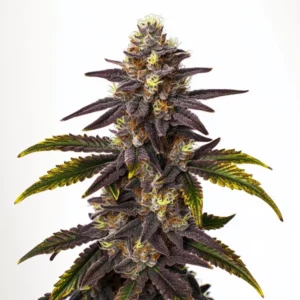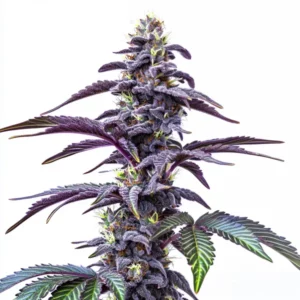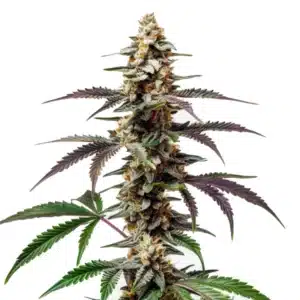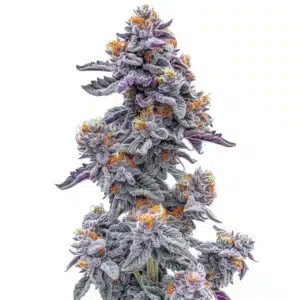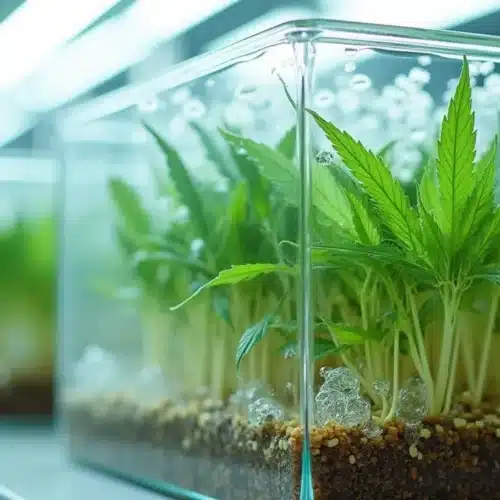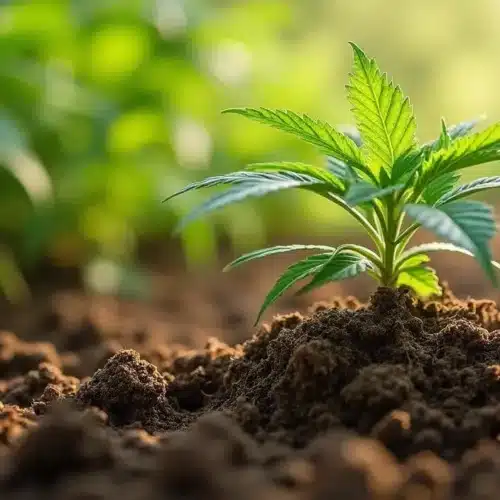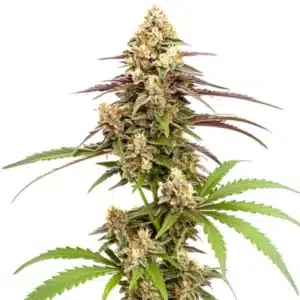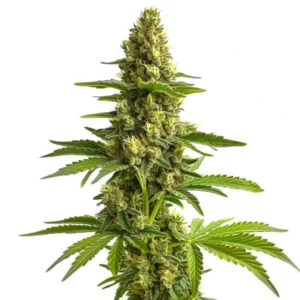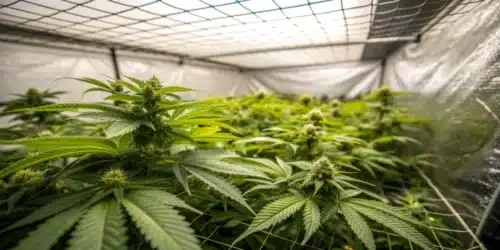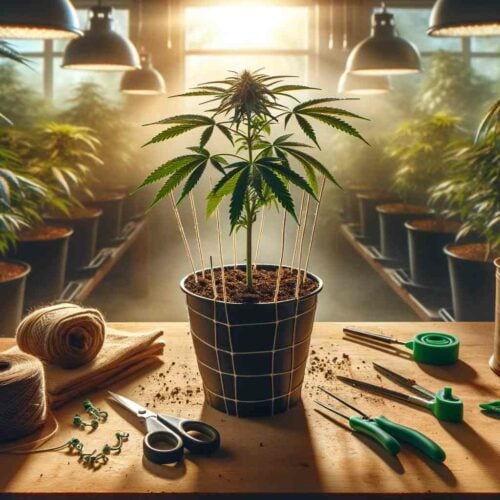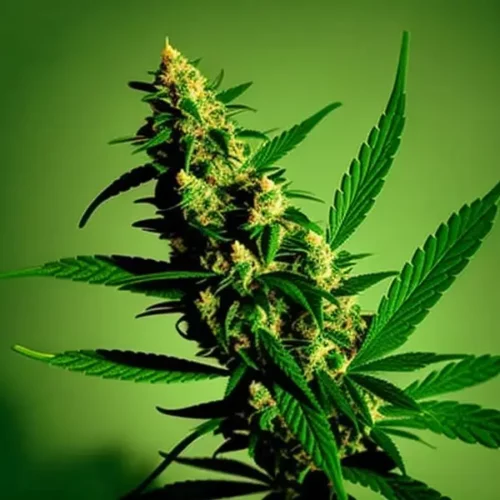Killer Weed Strain Description
The Killer Strain is one of the most potent cannabis varieties available today, beloved by both recreational users and medicinal patients. Known for its high THC levels, which typically range from 22% to 27%, this strain is ideal for those seeking powerful effects. Its balanced genetics make it suitable for users looking for a relaxing body high combined with an uplifting cerebral effect. The strain’s effects are long-lasting, providing a euphoric, yet tranquil state that has made it a popular choice among seasoned cannabis consumers.
Killer Weed Strain boasts dense, resinous buds that are often bright green with streaks of purple. The trichome coating gives the buds a frosty appearance, indicating their high potency. Its aroma is a unique blend of earthy and sweet notes, with undertones of citrus and pine, making it as pleasant to smell as it is to consume. The flavor profile mirrors its scent, delivering a smooth, rich smoke with hints of berry, spice, and pine. These characteristics, along with its robust effects, make Killer Weed Strain stand out in a crowded cannabis market.
Recommended Strains
Killer
 THC: 22% - 26%
THC: 22% - 26% Type of seed: Feminized
Type of seed: Feminized Phenotype: Mostly Indica
Phenotype: Mostly Indica Day to flower: 9 - 10 weeks
Day to flower: 9 - 10 weeks
Promos & Deals
Environmental Requirements for Growing Killer Weed Strain
To successfully cultivate Killer Weed Strain, it’s essential to provide the right environmental conditions. This strain flourishes in a warm, temperate climate, with ideal temperatures ranging from 70-80°F (21-27°C) during the day and slightly cooler at night. A stable environment with controlled temperature and humidity levels is crucial to prevent stress on the plants and to avoid issues like mold or mildew, which can be particularly problematic during the flowering stage.
When growing Killer Weed indoors, a controlled climate is key. High-quality grow lights, such as LEDs or HPS lamps, are necessary to provide the intense light the plant needs for healthy growth. During the vegetative stage, ensure a light cycle of 18-20 hours of light per day. When transitioning to the flowering stage, reduce the light to 12 hours of light and 12 hours of uninterrupted darkness. For outdoor cultivation, this strain thrives in sunny locations with ample direct sunlight. Greenhouse growing is also a viable option, especially in cooler climates, as it allows for better environmental control.
Humidity management is essential for this strain. During the vegetative phase, humidity levels should be kept between 50-60%. As the plant moves into flowering, lower the humidity to 40-50% to reduce the risk of mold formation on the dense buds.
Setting Up The Growing Cannabis Space
Indoor Cannabis Cultivation
For those choosing to grow Killer Weed Strain indoors, setting up a well-structured grow space is crucial. This strain requires a well-ventilated environment to thrive. Use a high-quality grow tent or dedicated grow room with sufficient space for the plants to grow tall and spread out. Proper ventilation helps control both heat and humidity levels. An exhaust system with a carbon filter is recommended to reduce odors and maintain fresh air circulation.
When it comes to the growing medium, Killer Weed Seeds can be cultivated in various setups, including soil or hydroponic systems. If you opt for soil, use a rich, well-draining mix with a pH level between 6.0 and 6.5 to encourage optimal nutrient uptake. For hydroponic setups, ensure proper nutrient management by monitoring pH and Electrical Conductivity (EC) levels. Reflective materials, such as Mylar, on the walls of the grow space will help maximize light distribution, ensuring even growth throughout the canopy.
Outdoor Cannabis Cultivation
Outdoor growers can expect Killer Weed Strain to thrive in environments with plenty of direct sunlight. Select a spot with rich, well-draining soil that is packed with organic matter. You can improve soil quality by adding compost or other organic amendments. Large containers or fabric pots can be used to better manage root health and soil conditions. To prevent your plants from being damaged by wind, consider positioning them near a fence or windbreaks.
Outdoor cultivation may require additional protection, such as using stakes or trellises, to support the branches as the buds develop and gain weight. The dense buds can cause the branches to droop, so providing structural support is essential to avoid breakage and improve airflow around the plants.
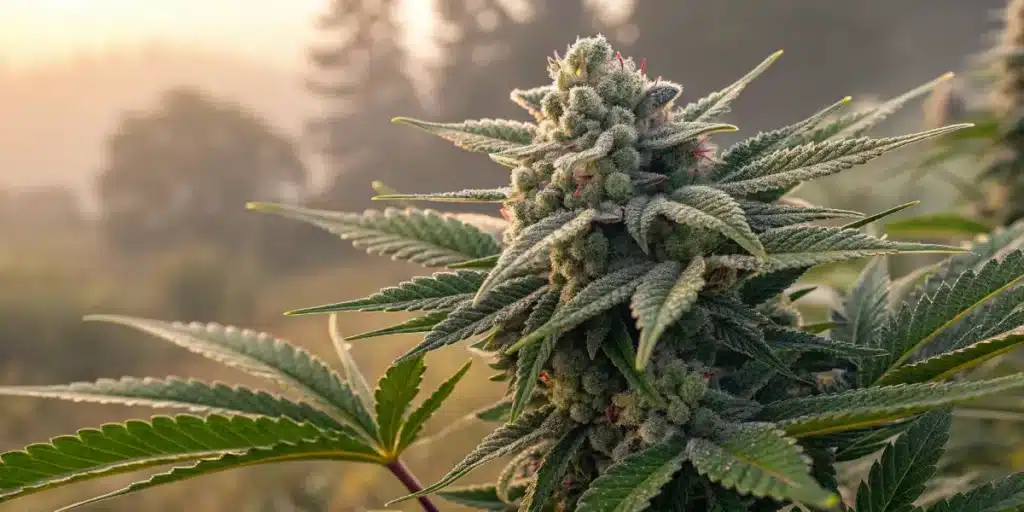
Propagation and Germination of Killer Weed Strain
Successful germination is the first step towards a healthy Killer Weed Strain plant. Start by sourcing high-quality, feminized seeds from a reputable seed bank to ensure a successful grow. Feminized seeds guarantee that the plants will produce buds, saving time and resources compared to regular seeds.
Soak the seeds in distilled water for 24-48 hours or until they develop a small taproot. After soaking, place the seeds in a damp paper towel or directly into a pre-moistened soil mix. Maintain a temperature between 70-85°F (21-29°C) in a dark environment to encourage germination. Once the taproot has emerged, transfer the seed to a small pot filled with a light, well-draining soil mix. Ensure the medium remains moist but not overly saturated.
During germination, it’s essential to provide the seeds with gentle, indirect light. As they sprout and develop their first true leaves, gradually increase the light intensity. Maintaining consistent humidity, around 60-70%, helps foster strong seedling growth. After a few sets of true leaves have formed, the seedlings can be transplanted into larger pots or directly into the garden for outdoor growers.
Vegetative Phase of Killer Weed Strain
The vegetative phase is when the plant focuses on developing its roots, stems, and leaves. During this stage, Killer Weed Strain requires ample light, water, and nutrients to build a strong foundation for the flowering phase. Provide your plants with 18-20 hours of light per day using LED or HPS grow lights. These lights should be positioned close enough to the plants to provide intense light without causing heat stress.
In terms of nutrition, a nitrogen-heavy fertilizer is ideal during this stage, as nitrogen promotes healthy leaf and stem growth. Organic options such as compost teas or commercial cannabis nutrients can be used, depending on your growing preferences. Always follow the manufacturer’s feeding schedule and monitor your plants for signs of nutrient deficiencies or excesses.
Watering is another key factor during the vegetative phase. Water your plants when the top inch of soil feels dry, but avoid overwatering as it can lead to root rot. To maximize yields, consider using low-stress training (LST) techniques, such as bending and tying down the branches to create an even canopy. This allows light to penetrate the lower parts of the plant and promotes better bud development.
Flowering Phase of Killer Weed Seeds
The flowering phase is the most critical stage in the lifecycle of this strain. During this period, the plant shifts its focus from vegetative growth to producing buds. To initiate flowering, adjust the light cycle to 12 hours of light and 12 hours of uninterrupted darkness. This simulates the natural shortening of days as the season changes, signaling the plant to start flowering.
As the plant transitions into flowering, it’s important to switch to a bloom-specific nutrient formula with lower nitrogen and higher levels of phosphorus and potassium. These nutrients support the development of large, dense buds. Monitor the plants closely for nutrient deficiencies, and adjust the feeding schedule as needed to ensure healthy growth.
Temperature control during the flowering phase is vital. Keep daytime temperatures between 65-75°F (18-24°C), and reduce humidity levels to around 40-50% to prevent mold and mildew. Providing adequate support, such as stakes or a trellis system, helps the plant bear the weight of the buds without bending or breaking the branches.
Killer Weed Strain has a flowering time of approximately 8-10 weeks. Monitor the trichomes using a magnifying tool to determine the optimal harvest time. When the trichomes turn from clear to milky white, with a few turning amber, the plant is ready to harvest.
Cannabis Fertilization and Nutrition
Killer Weed Strain is a high-demand plant when it comes to nutrients, especially during the flowering phase. To ensure maximum growth and high yields, it’s essential to provide the plant with the right balance of macronutrients (nitrogen, phosphorus, potassium) and micronutrients (such as magnesium, calcium, and iron).
During the vegetative phase, a nitrogen-rich fertilizer will encourage vigorous leaf and stem growth. As the plant transitions to flowering, reduce nitrogen and increase phosphorus and potassium. Phosphorus supports bud formation, while potassium helps with the overall strength and vitality of the plant.
Many growers opt to use organic nutrients or supplements to enhance the flavor and quality of their final product. Supplements like bloom boosters or microbial inoculants can also improve nutrient uptake and plant health. During the final two weeks of flowering, flush the plants with plain water to remove any excess nutrients and salts from the soil. This helps produce a smoother, cleaner final product.
Pest And Disease Control for Cannabis Growing
Like many cannabis strains, Killer Weed Strain is susceptible to pests such as spider mites, aphids, and thrips. To html minimize the risk of pests, it’s essential to regularly inspect your plants and keep the grow space clean and well-ventilated. Beneficial insects like ladybugs or predatory mites can be introduced to help control pests naturally without using harsh chemicals.
In terms of disease prevention, proper humidity control is key. Excess moisture can lead to fungal infections, such as powdery mildew or botrytis, which can devastate your crop, especially during the flowering phase. Keep humidity levels between 40-50% and ensure good airflow around the plants by spacing them properly and using fans to circulate the air. Remove any dead plant material from the growing area as this can attract pests and harbor disease. If you do notice signs of infection, act quickly by removing the affected areas and using organic fungicides or home remedies like neem oil or a milk spray to contain the problem.
Harvesting and Curing for Cannabis Growing
Harvesting Killer Weed Strain at the right time is essential for preserving its potency and flavor. The key to determining when your cannabis is ready to harvest lies in the trichomes, which are tiny, crystal-like structures on the buds. When the trichomes are mostly milky white with a few turning amber, this indicates the peak time for harvesting to ensure a balanced, potent effect.
To harvest, use sterilized pruning shears to cut the branches one by one. Handle the buds gently to avoid damaging the delicate trichomes. Remove the large fan leaves, but leave smaller sugar leaves on the buds as they will contribute to the overall structure and appearance. After trimming, hang the buds upside down in a dark, well-ventilated room with a temperature of around 60-70°F (15-21°C) and a humidity level of 50-60%. Proper airflow is crucial to avoid mold formation during the drying process, which typically takes 7-14 days depending on environmental conditions.
Once the buds are dried, it’s time to cure them. Place the dried buds in airtight glass jars, storing them in a cool, dark place. Open the jars daily during the first week to allow moisture to escape, gradually reducing the frequency over time. Curing enhances the flavor and potency of the buds, and a slow cure (2-4 weeks) will result in a more enjoyable final product with richer terpene profiles and smoother smoke.

Is Killer Weed Strain Indica or Sativa?
Killer Weed Strain is a well-balanced hybrid that leans slightly toward Indica dominance. Its Indica properties provide a calming, body-relaxing effect, perfect for unwinding or alleviating stress and muscle pain. At the same time, it offers uplifting, euphoric effects that are characteristic of Sativa strains, making it ideal for social settings or creative activities.
This balance between Indica and Sativa effects makes this strain versatile, as it can cater to both recreational users seeking relaxation and medicinal users looking for relief from conditions like anxiety, chronic pain, or insomnia. Despite its Indica dominance, Killer Weed doesn’t typically induce couch-lock, which allows users to remain active and focused while enjoying its calming benefits.
Advantages of Growing Killer Weed Strain
- High THC content: With THC levels ranging from 22% to 27%, Killer Weed Strain is ideal for users seeking strong, long-lasting effects.
- Unique flavor profile: The strain delivers a rich, complex combination of flavors, including berry, spice, and pine, which enhances the smoking or vaping experience.
- Resistant to pests and diseases: While preventive measures are still necessary, this strain shows resilience to common cannabis pests and diseases.
- Versatile growing options: This strain is suitable for both indoor and outdoor cultivation, making it accessible to a wide range of growers.
- Balanced hybrid effects: Killer Weed Seeds provides both body relaxation and mental stimulation, offering a versatile high.
Disadvantages of Growing Killer Weed Seeds
- Odor control: The strong aroma during the flowering stage may require odor control measures, such as carbon filters, especially for indoor grows.
- Nutrient sensitivity: Killer Weed Strain can be sensitive to nutrient imbalances, requiring careful monitoring of feeding schedules and pH levels.
- Branch support: As the buds develop and gain weight, the plant may need extra support, such as stakes or trellises, to prevent the branches from breaking.
- Humidity control: Like many dense-budding strains, Killer Weed is susceptible to mold if humidity levels are not kept in check, especially during flowering.
Why Buy Killer Weed Strain
There are several reasons why cannabis enthusiasts and growers alike are drawn to this strain:
1. Potent Effects: With THC levels reaching up to 27%, Killer Weed Strain offers a powerful high that is both euphoric and deeply relaxing.
2. Versatile Hybrid: The balanced Indica and Sativa effects make it suitable for various settings, whether you’re looking to unwind after a long day or engage in creative activities.
3. Flavor and Aroma: The complex terpene profile delivers a rich combination of sweet, earthy, and spicy flavors, making it a favorite among connoisseurs.
4. Medicinal Benefits: This strain is often used for its therapeutic properties, providing relief from stress, pain, anxiety, and insomnia.
5. Growing Potential: Whether you’re a novice or an experienced cultivator, this strain offers a rewarding growing experience with high yields and manageable requirements.
Common Problems in Growing Killer Weed Strain
Even though Killer Weed Strain is known for its resilience, growers may encounter a few challenges during the cultivation process:
Nutrient Sensitivity: Overfeeding or underfeeding can cause nutrient imbalances, leading to deficiencies or toxicities. It’s important to monitor your plants carefully and adjust feeding schedules based on their specific needs.
Pest Control: While the strain is relatively resistant to pests, it is not immune. Regular inspections and preventive measures such as introducing beneficial insects can help keep pests at bay.
Humidity Management: Maintaining proper humidity levels is crucial, especially during the flowering stage. High humidity can lead to mold and mildew, which can ruin your buds if not controlled.
Odor Control: The strong smell during flowering may require growers to invest in odor management tools, especially when growing indoors in residential areas.
Similar Strains
- OG Kush: Another hybrid strain known for its strong effects and unique flavor profile, OG Kush shares some of the same earthy and piney flavors as this strain.
- Durban Poison: For those who enjoy the cerebral stimulation of Killer Weed’s Sativa side, Durban Poison is a pure Sativa that offers a similar uplifting high with sweet and earthy flavors.
- Sour Diesel: This classic strain is known for its energizing and euphoric effects, as well as its pungent, diesel-like aroma, making it a great alternative for fans of Killer Weed.
Tips for Professional Growers
- Maximize Yields with SCROG: The Screen of Green (SCROG) technique can help increase yields by evenly distributing light across the plant canopy, promoting better bud development on all branches.
- Invest in High-Quality Lighting: For indoor growers, investing in full-spectrum LED grow lights will optimize growth and maximize the potential of this strain during both vegetative and flowering stages.
- Test and Adjust pH Levels: Regularly testing the pH of your soil or hydroponic solution ensures that nutrients are being absorbed properly, preventing deficiencies or nutrient lockout.
- Consider CO2 Enrichment: For more experienced growers, enriching the grow space with CO2 can accelerate growth and enhance bud production, especially in controlled indoor environments.
- Use Organic Nutrients: Organic fertilizers and supplements can improve the taste and overall quality of the final product, making it more appealing to connoisseurs and patients seeking natural remedies.
FAQs
What is the THC content of Killer Weed Strain?
This Strain typically has a THC content ranging from 22% to 27%, making it one of the more potent strains available.
Is Killer Weed Strain suitable for beginners?
Yes, while it has potent effects, this strain is relatively easy to grow, especially for those who can maintain consistent environmental conditions and monitor nutrient levels.
What flavors can I expect from Killer Weed Strain?
Killer Weed Strain offers a complex blend of earthy,sweet, and spicy flavors, with subtle undertones of citrus and pine. Its flavor profile is rich and unique, providing a smooth smoking or vaping experience.
How long does it take to grow Killer Weed Strain?
Killer Weed Strain typically takes 8-10 weeks to flower, depending on the growing environment and the specific phenotype. Outdoor growers can expect to harvest around late September or early October.
Can Killer Weed Strain be grown indoors?
Yes, this strain can be successfully grown indoors. With proper lighting, temperature control, and humidity management, indoor growers can achieve high yields and potent buds.


